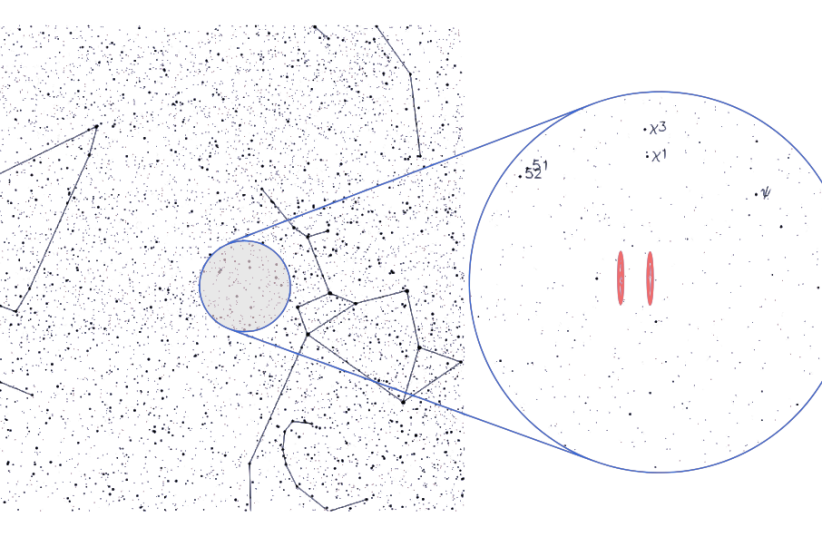A scientist may have pinpointed the origin of the Wow! Signal, the most famous alien radio broadcast in history, making it an ideal candidate for future research and observations in the Search for Extraterrestrial Intelligence (SETI).
The study, which was published in the peer-reviewed academic periodical The International Journal of Astrobiology, suggests that the famous signal could very well have come from a star located in the Sagittarius constellation that is similar to our own Sun.
What is the Wow! Signal?
The Wow! Signal is easily the most famous and enduring extraterrestrial radio transmission to Earth in history and to this day is the strongest candidate for a genuine radio transmission from an intelligent source.
The signal itself is a strong narrowband radio signal and was recorded on August 15, 1977 at the Big Ear radio telescope at Ohio State University.
The signal, which was detected over a period of 72 seconds (that was as long as the telescope was capable of observing, and it likely lasted longer), was then noticed by astronomer Jerry R. Ehman who, when looking over the printout of the data, circled the signal, noted by the sequence 6EQUJ5 and famously wrote "Wow!" next to it.
The sequence in question does not refer to any message broadcast in the signal, but merely referred to the intensity variation.
However, the signal, or any other like it, has yet to be detected again.
Many experts have put forth hypotheses that could explain where it came from, most of which tried to ascribe a mundane origin to them.
Famously, one theory proposed in 2017 suggested it could have been produced by a hydrogen cloud surrounding two comets in the area, but this was disproven for a number of reasons such as comets not emitting these strong radio signals at these frequencies and the location not being a fit.
Could it be aliens?
This is one commonly-cited possibility, though far from confirmed. It is still technically possible that it was broadcast from Earth and simply was reflected back by a piece of space debris, though this is still unlikely as the frequency is part of the protected spectrum where Earth-born transmissions are banned.
But if it was made by aliens, why has it only been sent once?
That is still possible. As noted in this new study, humanity has sent only a few radio signals with the goal of reaching an advanced alien civilization. As such, it is possible that another intelligent race could have done something similar and only sent a few signals.
The study
One of the big questions surrounding the Wow! Signal has always been where it came from. It was long thought that it originated from somewhere in the Sagittarius constellation, but efforts to narrow it down any further than two specific regions of space proved fruitless.
But what this study did was operate under the assumption that, if it was indeed made by an advanced and intelligent alien civilization, then they must live somewhere. Likely, they would live on an exoplanet similar to Earth.
To narrow it down, the researcher behind it made use of the European Space Agency's Gaia Archive, which contains data on the deduced positions, motions, brightness and more of objects in the Milky Way galaxy and beyond.
Here, they made use of the original estimates that narrowed down the origin of the signal to two regions and added a number of parameters and variables. Specifically, it came with the goal of narrowing it down to a certain kind of star that is the same type as the Sun, as the Sun is the only star confirmed to be able to support life.
With all these parameters, the researcher was able to narrow it down to 38 candidate stars. Then, when specifying it for Sun-like stars, it was narrowed down to just one star, designated 2MASS 19281982-2640123.
In other words, out of all the many stars in these regions of space where the Wow! Signal likely originated from, this was the sole star that was confirmed to be similar to the Sun. If there is an exoplanet capable of supporting an intelligent civilization, there is a possibility it could be here.
There were a couple of other possible candidates, too, but they were less likely due to lack of data. So it is unclear if they properly fit the model.
So in other words, this could be a potential target for further study, or even sending signals.
But there is a problem: Distance.
2MASS 19281982-2640123 is located some 1,800 light years away from Earth. In other words, sending a reply message of sorts is impossible - it's just too far away.
But it is an ideal candidate for observations.
Reactions
Understandably, this is an exciting discovery in the field of SETI, as this is the strongest candidate for a genuine alien transmission.
One person who commented on this was Russian-Israeli scientist and philanthropist Yuri Milner, founder of the Breakthrough Initiatives, which seeks to search for intelligent extraterrestrial life.
On Twitter, Milner noted that it was "intriguing that there’s a Sun-like star in the right place to be its source," though he did still take a more cautious approach and noted that it may well be just an artifact.
Also weighing in was Israeli-American astronomer Prof. Avi Loeb of Harvard University, one of the world's leading voices in SETI, and he too took a cautious approach.
"Science is about reproducibility of results," he explained in an email.
"The Wow! Signal did not repeat and hence it is difficult to infer its origin. There are suggestions that it was human made. We need to find more signals of this type before associating likely explanations."
He further gave the example of a recent radio signal detected coming from the direction of Proxima Centauri, the star nearest to our Solar System, which is known to have two exoplanets that could possibly be habitable. However, further study indicated that these signals were likely of human origin.
A cautious approach was also shared by Breakthrough Initiatives executive director Pete Worden.
"The Wow! Signal is interesting but like other detections... it is most likely human-generated radio interference," he said in an email.
However, Worden also noted an issue about the focus of the study itself: That other types of stars could also possibly host life, as there is no reason to assume that life can't or doesn't exist in environments that drastically differ from that of Earth's surrounding our Sun.
"Many experts believe life can and does exist under ice crusts in our own outer solar system. Some measurements suggest life exists in the hostile upper atmosphere of Venus," Worden explained. "The truth is we don’t know much about how life forms or where it can develop."

